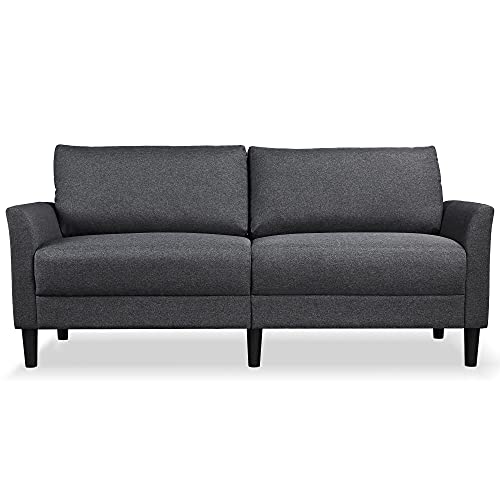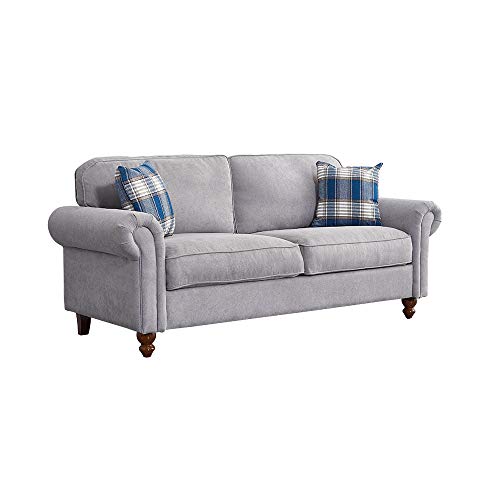Guide To 2 Seater Leather And Fabric Sofa: The Intermediate Guide To 2 Seater Leather And Fabric Sofa
작성자 정보
- Bob 작성
- 작성일
본문
 Choosing Between a 2 seater fabric lounge 2 seater fabric sofa leather and fabric sofa, forum.ressourcerie.fr,
Choosing Between a 2 seater fabric lounge 2 seater fabric sofa leather and fabric sofa, forum.ressourcerie.fr, When you're in the market for a new sofa it isn't easy to decide between fabric or leather. This is especially the case if you're not a professional with furniture experience.
When you're in the market for a new sofa it isn't easy to decide between fabric or leather. This is especially the case if you're not a professional with furniture experience.If you have children or live in apartments The leather option might be a good fit for you. It's easy to wipe down and it is stylish in all homes.
Comfort
A sofa is the focal feature of many people's living spaces and is a significant purchase. You want a sofa that is comfortable to sit for hours, looks great, fits to your style and can last for a long time. Deciding between leather or fabric is a difficult decision However, it is essential to evaluate your needs, lifestyle and budget before making a decision.
Leather is a high-end, luxurious material that oozes style and elegance in any home. It is durable and stain-resistant, as well as insensitive to pets and children and can last for a long time with proper care. However, it can be more expensive upfront and may require regular conditioning to avoid peeling or cracking.
Fabric sofas are available in a vast selection of styles, colors and fabrics. They are often cheaper than leather ones. They are also softer and more cosy, and can be "broken into" right from the beginning. They are prone to dust mites and pet hairs, and could require frequent cleaning. There are now hypoallergenic fabrics as well as new technologies that are available.
The life-span of a fabric sofa will depend on the quality of the fabric However, the majority of fabrics can last up to 15 years if they are properly maintained. Regular vacuuming and deep cleaning will ensure that the fabric stays clean and free of stains and odours. Like leather, they are susceptible to flattening and sagging over time. In addition, a lot of fabrics have been treated with chemical to make them stain-resistant and flame-resistant. They can release volatile organic chemicals that can cause allergic reactions and alter the quality of air in the indoors.
Durability
We typically choose sofas with fabrics that are durable, particularly if you have children or pets. You don't want to pay an excessive amount upfront and end up with buyer's remorse after the first spill or crowbarred claws. You don't want to buy something cheap that isn't durable enough for daily use.
Leather is also extremely resilient with a tremendous tear strength. It also lasts up to 4 times longer than fabric 2 seater sofa and is naturally resistant to cracking, fading and flaking over time. It can be treated in order to restore its natural oils, and make it look like new.
Fabrics are a less expensive alternative and are available in a variety of colors patterns, textures, and patterns to fit any design scheme. They are also easier to clean than leather and can withstand a fair amount of wear and tear, however, they can be more susceptible to moisture and be susceptible to fading over time.
Microfiber is extremely durable and comes in a variety of colors. However, it may not be as sturdy as genuine leather. It may also not be able to take scratches. However, it's still an ideal choice for families because of its resilience to stains and spills and it is easy to clean typically with a damp cloth.
Suede is more difficult to clean and repair than leather. It can also lose its shape if not maintained and can feel very rough to the touch. It is also a very thin material which means it may not be as durable as sheepskin or cowhide.
Allergens
Fabrics can have a significant impact on allergies. It is important to understand the way different options work. Fabrics are known to hold allergens such as dust mites, pet dander and mold that can trigger symptoms of allergies like rhinitis, hay fever, asthma and eczema. These fabrics are ideal for their health.
Leather is, however isn't prone to accumulating these allergens, and can provide consistent comfort no matter what season it is. It can also trigger dermatitis in people who have contact dermatitis or are sensitive to tanning chemicals. To minimize skin reactions, it is essential to use products that are vegetable-tanned and keep a consistent routine for your skin.
Both sofas made of fabric and leather are robust, but the fabric you choose will have a significant impact on how your couch is able to stand up to wear. A good quality fabric will stand up to everyday usage without fading or sagging and will be able to withstand spills and body oils easily. Many modern fabric 2 seater sofas even have stain-resistant treatments that make cleanup simple.
It is not possible completely to prevent an allergic reaction to the leather in your couch, but you can help to avoid allergens by keeping an lint-roller in your home and regularly vacuum your living space. This will help to reduce the amount of pet hair, dirt and dust mites that accumulate on your sofa. If you are still experiencing issues with allergies, try replacing your sofa with a allergy-friendly model. For example, a sofa made of synthetic leather or vinyl will not hold dust and pet mites. It can also allow you to breathe easier.
Scratches
It is crucial to consider how much wear you can expect for a leather couch. The length of time a sofa will last is contingent on the finish, color and leather quality. You should also make sure it is durable to withstand spills and other accidents. This can be accomplished by selecting a sofa with a solid wood frame and high density foam cushions.
Leather can be scratched by many different reasons such as stretching it, marking territory, or reliving tension. Scratches can be severe, from minor surface scratches to severe cuts and punctures. Minor scratches can be treated by applying a conditioner for leather to the area affected. This can help restore the balance of oil and moisture in the leather, which will prevent drying out and cracking. Cuts and scratches that are deep may require a different approach according to the extent of damage.
If you have cats, it is a good idea to trim their nails regularly, as this will help to prevent them from scratching your sofa. You can also redirect the scratching behavior by giving them alternative scratching surfaces, such as sisal rope or cardboard. Another option is to use a pet-safe furniture polish which can be applied with a soft cloth on the affected area.
It is important to clean your leather sofa regularly and keep it away from direct sunlight and heat since they could dry it out. This can cause it to crack, which is usually difficult to repair and frequently requires reupholstery. It is recommended to use a leather conditioner to keep the leather soft.
Smell
Leather couches can smell different than fabric. It's because leather is porous, and can absorb odors such as smoke, body odors, or food. The good news is that odors tend to disappear over time, particularly if you employ a non-toxic, fragrance free cleaner.
If the smell is strong, it could mean that something is wrong with the foam. This is usually caused by the chemical off-gassing process of polyurethane based on petroleum. If you are concerned about this then look for couches that are manufactured with CertiPUR US certified or natural latex.
Another trick to spot faux leather is to look for bumps or texture on the back of the sofa. This is a telltale sign that it's not genuine top grain leather. You can also do a visual inspection by tiling the couch on its side to see if it's possible to see any upholstery backing that is visible. If you are able to smell it, then it's likely a synthetic material like polyester or polyurethane. These types of materials will have a different scent than leather.
Leather couches are more prone to picking up odors, the best method to avoid this is to regularly clean your sofa. This will help keep it looking great and smells great and also prevent it from becoming stiff or cracking over time. Start by vacuuming, dusting and wiping the couch with baking soda (a natural way to eliminate smells). This is to be done at least every two weeks in order to remove any dirt or dust. Then, apply a leather conditioner in order to keep your sofa's color and texture.
관련자료
-
이전
-
다음
댓글 0
등록된 댓글이 없습니다.

